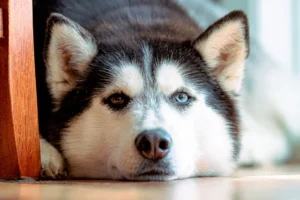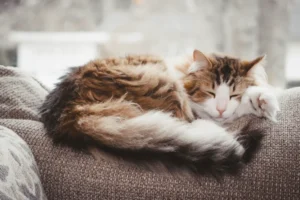Cats in heat can be quite vocal, and their howling can be loud and persistent. But have you ever wondered why cats howl in heat? Let’s explore the reasons behind this behavior and what you can do to help your feline friend during this time.
Understanding the Heat Cycle
Female cats go through a heat cycle, also known as estrus, typically lasting about a week to ten days. During this time, they become more vocal, restless, and affectionate. One of the most noticeable signs that a female cat is in heat is excessive meowing or howling. This behavior is their way of communicating their readiness to mate.
Apart from vocalization, other signs of a cat in heat include excessive rubbing against objects, restlessness, excessive grooming, and elevated affection toward their owners. It’s important to note that unspayed female cats will go into heat multiple times throughout the breeding season, which can be frustrating for both the cat and their owners.
The Role of Hormones
Hormones play a crucial role in the heat cycle of a female cat. When a cat is in heat, her body releases reproductive hormones that trigger behavioral changes to attract male cats for mating. The primary hormones involved are estrogen and progesterone, which regulate the cat’s reproductive cycle.
Estrogen levels rise during the heat cycle, causing the cat to exhibit behaviors such as calling, rolling on the floor, and raising her hindquarters. These behaviors are all aimed at attracting male cats for mating. As the heat cycle progresses, progesterone levels also increase, preparing the cat’s body for potential pregnancy.
One unique insight to consider is that some female cats may exhibit howling more than others during heat due to individual differences in hormone levels and sensitivity to hormonal changes. If your cat’s howling seems excessive or distressing, consulting with a veterinarian about spaying or other options to manage her heat cycles may be beneficial. Additionally, providing enrichment activities and distractions for your cat during heat can help alleviate some of the vocalization behaviors.
Remember, understanding the heat cycle and hormonal changes in cats can help pet owners better support their feline companions during this natural and sometimes challenging phase.
Seeking a Mate
Cats howl in heat to attract potential mates, a natural instinct deeply ingrained in their behavior. This loud vocalization serves as a way for female cats to signal to male cats that they are ready to mate. It is their way of communicating their availability and seeking a partner to fulfill their biological drive for reproduction. This behavior is most common in unspayed female cats during their mating season, typically in the spring and fall when daylight increases.
Providing Comfort
During your cat’s heat cycle, it’s essential to provide comfort and support to help alleviate their distress and reduce excessive howling. Here are some tips to help comfort your cat: 1. Create a quiet and cozy space for your cat to relax in. 2. Use soothing music or white noise to help calm your cat. 3. Provide interactive toys and activities to keep your cat entertained and mentally stimulated. 4. Consider using pheromone diffusers or calming sprays to create a relaxing environment.
Additionally, it’s crucial to consult with your veterinarian about spaying your cat to prevent future heat cycles and potential health issues. Remember, a little extra love and care can go a long way in comforting your furry friend during this challenging time.
Potential Health Concerns
During the heat cycle, it’s crucial to keep an eye on your feline friend for any potential health issues that may arise. If your cat is excessively howling, displaying signs of distress, or exhibiting unusual behavior, it could indicate underlying health concerns. Symptoms such as lethargy, lack of appetite, or straining to urinate should not be ignored. These could be signs of a serious condition such as a urinary tract infection or even reproductive issues.
If you notice any concerning symptoms, it’s essential to seek veterinary care promptly. A professional evaluation can help identify any health issues and ensure your cat receives the necessary treatment. Remember, timely intervention can prevent complications and promote your cat’s overall well-being.
Spaying and Neutering
One of the most effective ways to prevent the heat cycle and related behaviors in cats is through spaying and neutering. This simple procedure not only helps control the pet population but also offers numerous health benefits for your furry companion.
Spaying (for females) and neutering (for males) can reduce the risk of certain cancers, eliminate the urge to roam in search of a mate, and prevent unwanted litters. Additionally, spaying and neutering can help calm your cat’s behavior, reducing aggression and territorial marking.
By spaying or neutering your cat, you can provide them with a happier, healthier life while also contributing to the overall welfare of the feline population. Consider discussing this option with your veterinarian to understand the benefits and schedule an appointment for the procedure.
Benefits of Spaying and Neutering: 1. Reduces the risk of certain cancers. 2. Eliminates the urge to roam and mate. 3. Helps control aggressive behavior. 4. Prevents unwanted litters. 5. Promotes overall well-being for your cat.
Remember, spaying and neutering are not only beneficial for your cat but also play a significant role in responsible pet ownership.
Coping Strategies
When your cat is howling in heat, it can be challenging for both of you. To help cope with this behavior, consider providing your kitty with plenty of attention and affection. Engage in playtime to help distract her and release some pent-up energy. Ensure she has a comfortable and quiet space to relax in, away from external stimuli that may intensify her howling. Additionally, consider speaking with your veterinarian about potential options such as spaying to help mitigate the effects of heat cycles.
Interesting Facts
Did you know that female cats in heat can exhibit some surprising behaviors beyond just howling? Some may become more affectionate, while others may show increased restlessness or even spray urine to attract male cats. It’s fascinating to observe how these natural instincts manifest in our feline friends. Remember, understanding these behaviors can help you provide the best care for your cat during this time.
Fun Fact : Female cats in heat often vocalize more frequently and loudly to attract male cats, leading to those distinctive howling sounds. This behavior is perfectly normal for cats in heat as they seek a mate during their fertile period.
For additional information on spaying and its benefits for female cats in heat, check out this resource.
Alex, a passionate animal lover, has experience in training and understanding animal behavior. As a proud pet parent to two dogs and three cats, he founded AnimalReport.net to share insights from animal experts and expand his knowledge of the animal kingdom.




